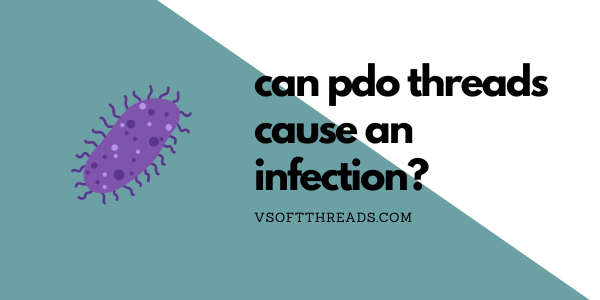
Many people would love to stop Father Time and what he does to our skin. This is especially true of our face, which often shows the signs of aging more so than other parts of our body.
While there’s obviously nothing we can to do stop the aging process, there are many options for reversing the effects of aging. In fact, there are many minimally-invasive options today, including PDO threads.
These dissolvable sutures can help treat wrinkles, lines and sagging skin, while also adding definition to parts of your face such as under the eyes or around the lips. PDO threads don’t require surgery, which is a major advantage that these procedures provide over traditional facelifts.
Those who haven’t had a PDO threads procedure before might be concerned about some of the possible side effects. One of these concerns is whether you can develop an infection because of a PDO threads procedure.
Below, we’ll shed more light on what PDO threads are as well as the possibility of an infection happening.
Any time that your skin is punctured, there is a chance that an infection will happen. That’s because dirt, dust, and other particles could enter the puncture, allowing bacteria to enter and grow. Because of this fact, it is indeed possible for you to get an infection after a PDO threads procedure. At the same time, it’s considered very rare.
Table of Contents
Add a header to begin generating the table of contents
 Medically reviewed by: Elizabeth Williams RN
Medically reviewed by: Elizabeth Williams RN
Updated: 11/11/2024
What are PDO Threads?
PDO threads are thin threads that have actually been used in surgical procedures as dissolvable sutures for more than 50 years now. Aesthetic medicine procedures that use these threads are done in outpatient settings.
This is because only local numbing agents are required to make you feel comfortable for the procedure. After the area is numbed sufficiently, the provider will insert the PDO threads into your skin using a preloaded canula, which is similar to how IVs are done.
While you might feel some slight pulling, pressure and/or tugging while the PDO threads are being inserted and placed, the procedures are generally pain-free.
They take only about an hour to complete, and you’re able to resume most of your daily activities as soon as you leave the office.
How Do PDO Threads Work?
PDO threads work in two main ways.
First, some have barbs on them, which are designed to grab onto parts of your skin to lift it up. This is how it mimics the results of traditional facelifts. These types of PDO threads are used to lift sagging skin, treat wrinkles and add definition.
PDO threads are 100% biodegradable and biocompatible. This means that negative reactions only happen rarely with these procedures.
Your body uses natural processes to break down the PDO threads over time. During this process, it also produces extra collagen, which helps the results to last longer and also makes your skin more elastic, smooth and youthful looking.
What is the Recovery Period?
As mentioned, you can resume many of your day-to-day activities as soon as you leave the office. Your provider will give you instructions that will likely include avoiding strenuous exercise, facial massages and deep facial cleansing for a few weeks.
You may experience minor swelling and/or bruising in the treated area, but it will usually resolve itself within a week or so on its own. You can use ice and certain medications to treat this, though you should avoid aspirin and NSAIDs for a few weeks as well.
Can PDO Threads Cause an Infection?
Any time that your skin is punctured, there is a chance that an infection will happen. That’s because dirt, dust, and other particles could enter the puncture, allowing bacteria to enter and grow.
Because of this fact, it is indeed possible for you to get an infection after a PDO threads procedure. At the same time, it’s considered very rare.
That being said, this does emphasize how important it is for you to visit a practitioner who is a trusted provider of PDO threads procedures. They should have good reviews, be well respected in the field and provide a sterile environment at which the procedures will be done.
When you have a talented and experienced provider, your chances of getting an infection from a PDO threads procedure will be very low.
If you do run into this complication, you may experience some redness, swelling, pain and even some pus around where the PDO threads were inserted. If you do suspect you have an infection, you’ll want to visit your provider as soon as possible.
They may refer you to your primary care physician or an urgent care facility, who might prescribe an antibiotic to treat the infection.
Use PDO Threads from V Soft Lift
Getting an infection from a PDO threads procedure is possible, but it’s not very likely. Since the procedure does involve puncturing your skin, it’s important that you choose a provider who is trusted, has experience with PDO threads and provides a sterile environment.
Making this choice will help you reduce the chances of getting an infection to very low levels.
At the same time, you should go to a provider who uses V Soft Lift PDO threads.
We have created many different lines of PDO threads so that providers can choose the ones that work best for your specific procedure and skin type, which ensures the safest and best results.
For more information, contact us today.
